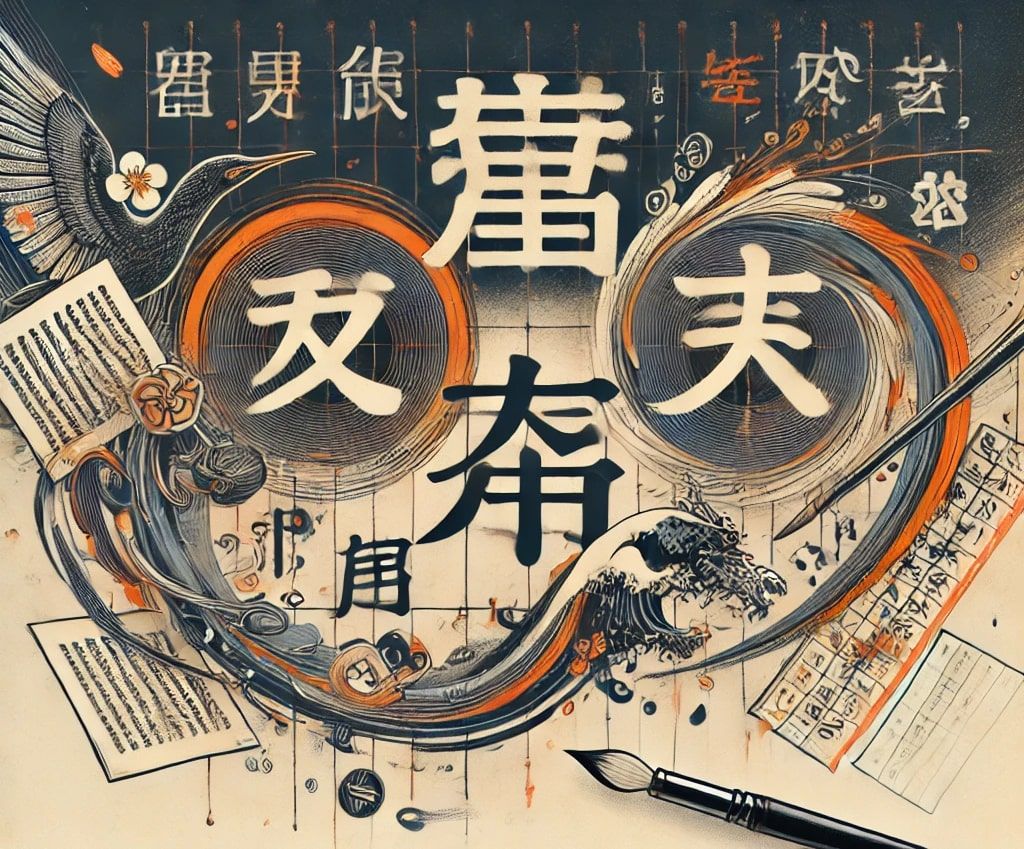Blog

The Japanese writing system tells a captivating story of cultural exchange and adaptation. From its beginnings with Chinese kanji to the creation of hiragana and katakana by Japanese scribes, each script reflects the nation’s evolving identity.
The Japanese writing system is one of the unique and complex in the world. It has evolved over centuries, influenced by China, shaped by Japan’s cultural needs, and adapted to the intricacies of the Japanese language itself. This article takes a deep dive into the history and development of the writing system that has become a hallmark of Japanese literacy and culture.
The roots of the Japanese writing system trace back to China. Around the 5th century, Japan began adopting Chinese characters, known as kanji, to represent both the meaning and pronunciation of words. Initially, kanji were used primarily for writing Chinese, as the Japanese language did not yet have its own written form.
The process of using kanji in Japanese was not straightforward. Since Chinese and Japanese are fundamentally different languages, early Japanese scribes had to adapt the characters to suit the phonetic structure of Japanese. Some kanji retained their original Chinese meanings, while others were assigned new, Japanese meanings. Over time, the Japanese language became more and more entwined with Chinese characters.
As the complexity of kanji grew, so did the need for a simpler and more flexible writing system that would be easier to learn and more efficient for everyday use. This led to the development of kana, a syllabic writing system.
Hiragana, the cursive form of kana, was developed by women during the Heian period (794–1185), who found kanji difficult to master. They began simplifying the characters into more fluid, cursive forms that were easier to write. Hiragana allowed Japanese women to write literature, poetry, and personal letters, giving birth to some of Japan’s most famous literary works, such as The Tale of Genji by Murasaki Shikibu.
Around the same time, katakana emerged as a script used primarily by men, especially scholars and monks. Katakana was derived from simplified portions of kanji and was initially used for writing foreign words, technical terms, and onomatopoeia.
During the Heian period, the widespread use of hiragana gave rise to a rich body of literature, largely written by women. As society embraced kana, Japanese literature flourished. The writing system itself mirrored the refinement of the era, and the role of hiragana and katakana in shaping cultural identities became undeniable.
Hiragana became deeply associated with the expression of native, personal, and emotional themes. It was the script used in many of Japan’s classical poems, stories, and diaries, such as The Pillow Book by Sei Shonagon. Katakana, on the other hand, became a script for foreign words, scientific terms, and religious texts.
Today, the Japanese writing system uses a combination of all three scripts: kanji, hiragana, and katakana. Kanji still dominates written Japanese, especially in formal writing and to convey the core meanings of words. Hiragana is used for grammatical elements, such as verb endings and particles, while katakana is used for foreign loanwords, onomatopoeia, and technical terms.
The system is highly efficient because it allows for different levels of meaning to be conveyed with a single character. A sentence may use kanji for its main content, hiragana for grammatical structure, and katakana for foreign words, creating a rich, layered text that can be read with nuance and ease.
The multi-script system of kanji, hiragana, and katakana reflects the intricate nature of the Japanese language itself. Japanese speakers are taught to navigate between these scripts seamlessly, much as they navigate various layers of formality, respect, and nuance in everyday communication. The ability to read and write in three different scripts requires flexibility and adaptability — traits that are mirrored in Japanese culture.
The presence of kanji, with its meanings rooted in Chinese, reflects Japan’s historical and cultural connection to China. Hiragana, developed for more intimate and personal forms of expression, speaks to the Japanese appreciation of emotional depth and sensitivity. Katakana, on the other hand, shows Japan’s outward-facing engagement with the world, especially in the context of modern globalization and foreign influence.
Multiple Readings: Many kanji have multiple readings. For example, the character for “mountain” (山) is read as yama in native Japanese and san in Chinese readings used in compound words like fujisan (Mount Fuji).
Kanji Adaptations: Some kanji have been simplified over the years for easier reading and writing. The Japanese government introduced simplified kanji (called shinjitai) after World War II to promote literacy.
Foreign Loanwords: Katakana is used for writing foreign loanwords, so words like コンピュータ (konpyūta, "computer") and テレビ (terebi, "television") are written in katakana.
Kana in Modern Media: Today, manga and anime often use all three scripts, with kanji for emphasis, hiragana for easy reading, and katakana for foreign influences, creating a visually dynamic and culturally rich experience.
Conclusion
The Japanese writing system is an embodiment of Japan's unique cultural history and linguistic complexity. From the ancient adoption of Chinese characters to the creation of hiragana and katakana, each phase of the writing system’s evolution tells a story of adaptation, creativity, and cultural exchange. Understanding the origins and evolution of the Japanese writing system is not only a linguistic journey, but also a window into the heart of Japanese society and thought.
By learning about the nuances of kanji, hiragana, and katakana, one can gain a deeper appreciation for the beauty and complexity of the written Japanese language.